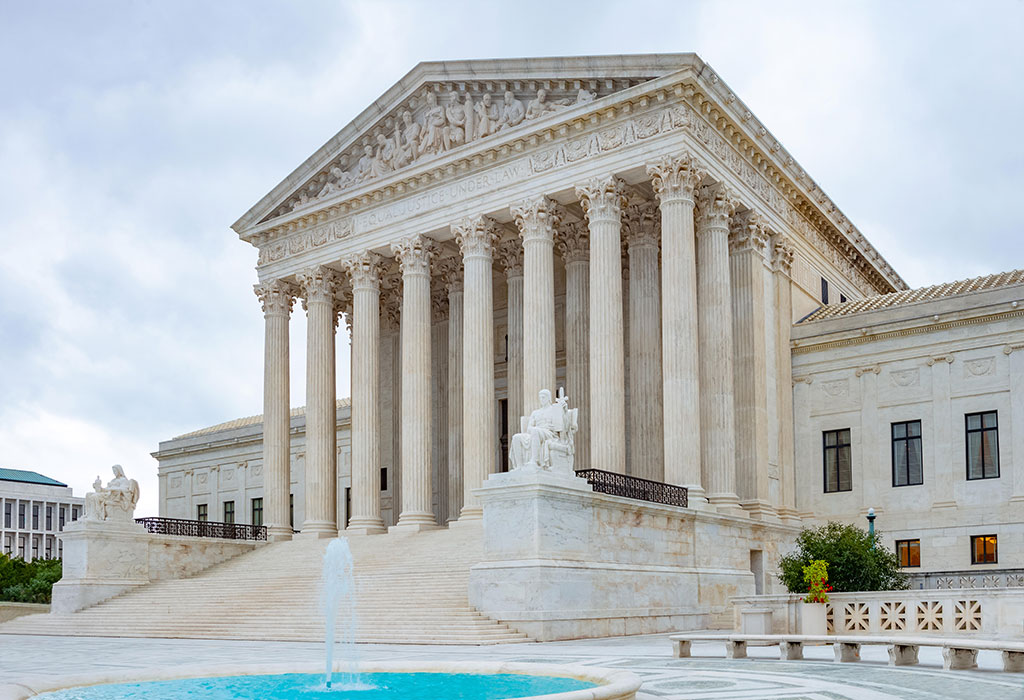Supreme Court Overturns 9th Circuit Ruling on Mandatory Detention of Alien Criminals
The issues involved are important for reasons of public safety and extend beyond the immediate plaintiff/respondent aliens, all of whom were convicted of certain offenses that required their mandatory detention as specified in Section 236(c) of the Immigration and Nationality Act (INA). That section, codified at 8 U.S.C. Sec. 1226(c), states, in pertinent part:
Detention of Criminal Aliens.- (1) Custody.-The Attorney General shall take into custody any alien who [is inadmissible or deportable for having “committed certain dangerous crimes” or having “connections to terrorism”, as explained in the Supreme Court opinion] when the alien is released, without regard to whether the alien is released on parole, supervised release, or probation, and without regard to whether the alien may be arrested or imprisoned again for the same offense. [Emphasis added.]
The argument at all levels of the federal judiciary focused on the intent and meaning of the words “when the alien is released”. The aliens, in prevailing at the district and circuit courts, argued that the intent was to force the government into a position of mandatory detention only if it was able to assume custody immediately upon release; if any time elapsed between release and arrest by immigration authorities — as little as 24 hours, according to the aliens’ filings in the courts — then the aliens were presumed to be entitled to consideration of bond.
It’s worth noting that in the context of removal proceedings, such a view also means that if the government imposes a bond or other condition of release not to the alien’s liking, that, too, may be appealed through the immigration courts and into the federal judiciary; one can see that endless avenues of appeal develop, resulting in shockingly long delays in ever getting around to a decision on the case-in-chief, which is to say, removal of a dangerous alien criminal.
My colleague Art Arthur has written a blog post focusing on the finer points of the arguments that bests anything I could possibly write, so I won’t attempt it, but this time-limiting property ascribed to the phrase always struck me as an artificial interpretation, and I cannot help but wonder if the lower courts stretched to accept it simply because the results would be more to their liking.
It always seemed clear to me that use of the phrase “when the alien is released” was a short-hand expression of the conditional, rather than the chronological circumstances of assuming custody of the alien. In other words, I believe that it was another way of saying, “upon the release of an alien from custody by state and local authorities”. The legislators were expressing their will that immigration authorities should not attempt to short-circuit state or local courts by taking custody while the alien was still within the confines of their criminal justice system, including while serving any sentence imposed by those courts, but once having been released into society, even on a short leash such as parole or probation, then the provision should kick in and permit the authorities to arrest, detain, and initiate expulsion proceedings against the alien criminal. This interpretation certainly makes better sense when one looks at the follow-on language to be found in the statute. Had the legislators intended “when the alien is released” to imply immediacy, wouldn’t they have used the phrase, “immediately upon release”? They didn’t, and probably could never have conceived that the phrase would be so inaptly misconstrued.
Such an interpretation also rewards sanctuary jurisdictions, because they have chosen a course of action in which they render it impossible for immigration agents to know when an alien criminal is going to be released so that they will be in a position to immediately assume custody. They deliberately cast a cloak of silence over their proceedings and their inmates by refusing to allow their police or deputies to communicate and cooperate with federal authorities.
In a real sense, sanctuary governments collude with alien criminals in evading arrest by immigration agents by ensuring that they are released to the street, leaving the agents to try to pick up the trail after they are gone. Multiply this scenario by the thousands, and one can see that it becomes a needle-in-a-haystack proposition. Is this in the public interest? It is not. Does it promote public safety? It does not.
Time and again, we have seen such short-sightedness, which results in violence and murder when violent alien criminals are released without the knowledge of immigration enforcement agents. It happened again most recently when an alien criminal, who was released by California police authorities at least nine times despite the filing of immigration detainers, went on to stalk and murder an innocent victim (see here and here).
And yet that is the interpretation of “when the alien is released” that the lower courts were content to force on the government by misconstruing the intent of Congress in INA Section 236(c). Happily, the Supreme Court has intervened to instill a modicum of common sense into the interpretation of the law.
SOURCE : Center For Immigration Studies By Dan Cadman





